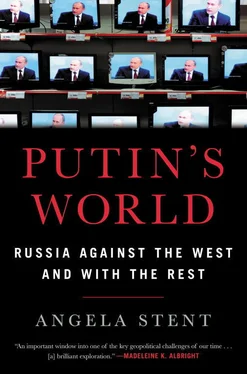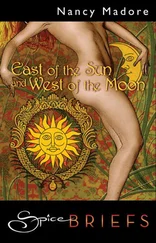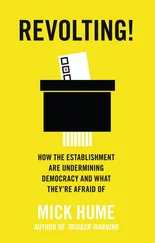Today most Russians—encouraged by Vladimir Putin’s stark narratives—see the 1990s as a time of Western humiliation of Russia, of poverty, chaos, and the rise of rapacious oligarchs. Russia, in this view, had to accept a foreign policy agenda dictated by the United States that was inimical to its own interests and in which it was very much a junior partner. It was also encouraged to adopt an economic system that exacerbated Soviet-era inequality, particularly after the 1998 financial crash. US democracy-building projects were—and are—viewed as interference in Russia’s domestic affairs and an assault on Russian sovereignty. The roots of Putin’s attacks on the United States lie in his scathing view of the 1990s—that decade was to propel him from a dropout mid-level KGB case officer to the pinnacle of power in the Kremlin.
Since the Soviet collapse, five baskets of issues have dominated the US-Russia relationship. The first is the nuclear legacy. The United States and Russia are the world’s two nuclear superpowers, capable of destroying each other many times over. They bear a special global responsibility unlike that of any other country, and this gives their relationship a unique structure. The Cold War nuclear legacy involves arms control, missile defense, and nuclear modernization. The second, and related, basket of issues involves the nonproliferation of weapons of mass destruction, particularly the nuclear programs of Iran and North Korea. The third relates to Russia’s neighborhood and the respective roles of America and Russia in the post-Soviet space, particularly Georgia and Ukraine. The fourth involves European security, including conflict in the Balkans, NATO expansion, and the role of the OSCE. The fifth involves Russia’s domestic evolution, US democracy-promotion efforts, and attempts to influence how Russia treats it citizens. Under Putin, three additional sets of issues have come to be added to this list of challenges: the upheavals in the Arab world, the war in Syria, and Russia’s interference in the 2016 US election campaign.
The US-Russia relationship is largely determined by the reality of these two countries being the world’s two nuclear superpowers. The economic relationship is limited because Russia remains a raw-materials and arms exporter, and the United States, unlike Europe or China, does not need to import Russian energy (except the occasional cargo of LNG), nor does it need to import Russian military hardware. Hence there are few stakeholders in the relationship, and personal ties between the two leaders play a disproportionately important role. When those ties are good—as they were between Clinton and Yeltsin in the early years, between Bush and Putin after 9/11, and between Obama and Medvedev—then the relationship functions better. When they are antagonistic—as they were at the end of Clinton’s term, after the invasion of Iraq under Bush, and during Obama’s second term when Putin returned to the Kremlin—the relationship can quickly enter a downward spiral. Bill Clinton was effusive after his first meeting with Boris Yeltsin in 1993: “I liked him. He was a big bear of a man, full of contradictions…. Compared to the realistic alternative, Russia was lucky to have him at the helm.” 18Yeltsin returned the compliment: “I was completely amazed by this young, eternally smiling man who was powerful, energetic, and handsome.” 19
From the US point of view, the major successes in relations with Russia under Bill Clinton were in foreign policy: the denuclearization of Ukraine, Belarus, and Kazakhstan, leaving Russia as the sole post-Soviet nuclear successor state; cooperating with Russia in the Balkans (albeit with considerable difficulty in Kosovo); neutralizing Russia’s opposition to NATO enlargement; and turning the G-7 group of advanced industrial democracies into the G-8 by admitting Russia as a stakeholder. The problem is that on all but one of these issues Washington had to persuade a reluctant Russian government to support actions it initially resisted. Although Russia favored the denuclearization of Ukraine, Yeltsin was forced to deal with Leonid Kravchuk as the leader of an independent, sovereign Ukraine. Moreover, Russia had to sign the Budapest declaration respecting Ukraine’s territorial integrity. Russian willingness to cooperate with the US in the Balkan wars diminished as Yeltsin came under fire from nationalistic opponents. The same was true for NATO expansion and the Permanent Joint Council. By 1999, when Putin became prime minister, US-Russia relations had reached a post–Cold War low ebb in the aftermath of the bombing of Belgrade. The first reset had ended.
THE PUTIN ERA
INITIAL OPTIMISM AND THEN DISAPPOINTMENT
Before the Soviet collapse, Vladimir Putin had very little exposure to the United States beyond what he must have learned about the “main enemy” in the KGB. He had served in the GDR and become the “German in the Kremlin.” He did not speak English and probably had little occasion to socialize with the few US exchange students who were at Leningrad State University in the early 1970s. Before 1990, he may never have met an American in a personal context. He first began to work with Americans when he became deputy mayor of Saint Petersburg and was responsible for foreign economic contacts. It is said that he drove Vice President Al Gore around Saint Petersburg when Gore visited. Russia was rapidly opening up for business with the West, and Putin dealt with all Western businesses who needed licenses and real estate to operate in Russia. John Evans, then US consul general in Saint Petersburg, described him as a “law and order man. He was not corrupt, but he was a crime fighter.” 20He was seen as pro-business and open to dealing with all westerners. In 1992, the Center for Strategic and International Studies, a Washington-based think tank, had partnered with Procter and Gamble to create the International Action Commission for Saint Petersburg, whose co-chairs were Henry Kissinger and Mayor Anatoly Sobchak. Through this commission, Putin not only met Kissinger—with whom he developed a rapport and continued to consult into his fourth presidential term—but other influential Americans. There was no evidence, prior to his assumption of the presidency in 2000, that Putin harbored particularly antagonistic feelings toward the United States. 21
Indeed, he impressed those who first met him when he entered the Kremlin as someone who was interested in developing closer ties with the United States and integrating Russia into the world economy. He met World Bank president James Wolfensohn shortly after becoming president and told him he wanted to modernize his country, pursue economic reforms, and reduce corruption. 22He presented himself as a leader seeking constructive ties with the West.
Putin’s first meeting with George W. Bush gave him an opportunity to display his positive disposition toward the US. They met at the Brdo Castle in northern Slovenia. Bush’s first trip to Europe had, until this point, been difficult. He had experienced less than enthusiastic—indeed disparaging—treatment from allies. Putin, by contrast, was respectful and serious, warning Bush about the dangers of Islamic fundamentalism and terrorism emanating from Pakistan and Afghanistan. At their joint press conference, Bush spoke about the importance of “building a constructive, respectful relationship with Russia.” Putin rejoined, “We are counting on a pragmatic relationship with the United States.” After discussing areas of mutual interest, Bush uttered a fateful phrase he would later come to regret: “I looked the man in the eye. I found him very straightforward and trustworthy…. I was able to get a sense of his soul.” 23
At this point Putin was concerned that the United States had not faced up to the dangers of jihadist terrorism. Hence, when Al-Qaeda attacked the Twin Towers and the Pentagon on September 11, 2001, Putin seized the opportunity to offer Russia as the United States’ partner in the fight against terrorism. He was the first leader to call Bush after the attacks, pledging support for NATO’s campaign, accepting the establishment of US military bases in Central Asia to launch its war against the Taliban, and providing vital intelligence based on Russia’s long involvement in Afghanistan. 24Indeed, the autumn of 2001 was the high point in US-Russia relations under Putin. Russia viewed the anti-terror fight as a twenty-first-century version of the anti-Hitler coalition. Russia and the United States had a common enemy and were equal partners. Putin came to the United States in November 2001, received a positive welcome in Washington, and ended his trip square-dancing at the Bush ranch in Crawford, Texas.
Читать дальше












